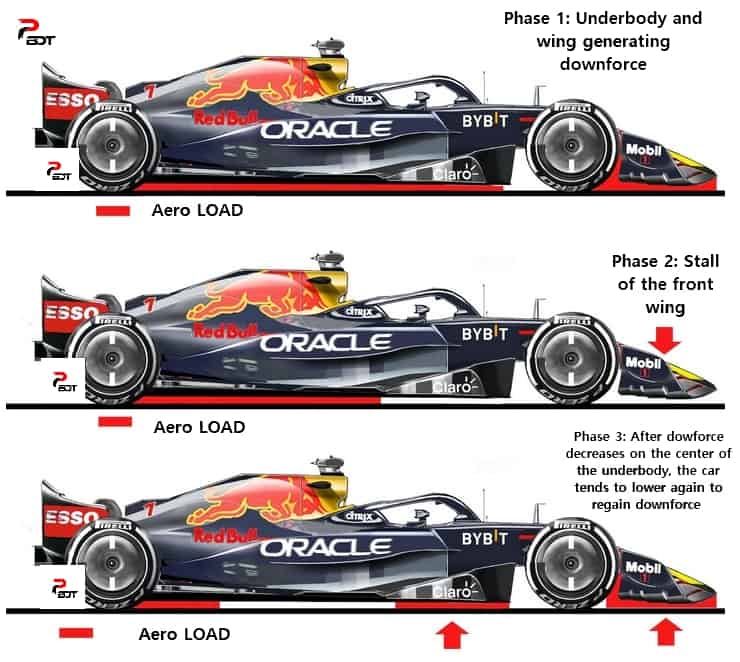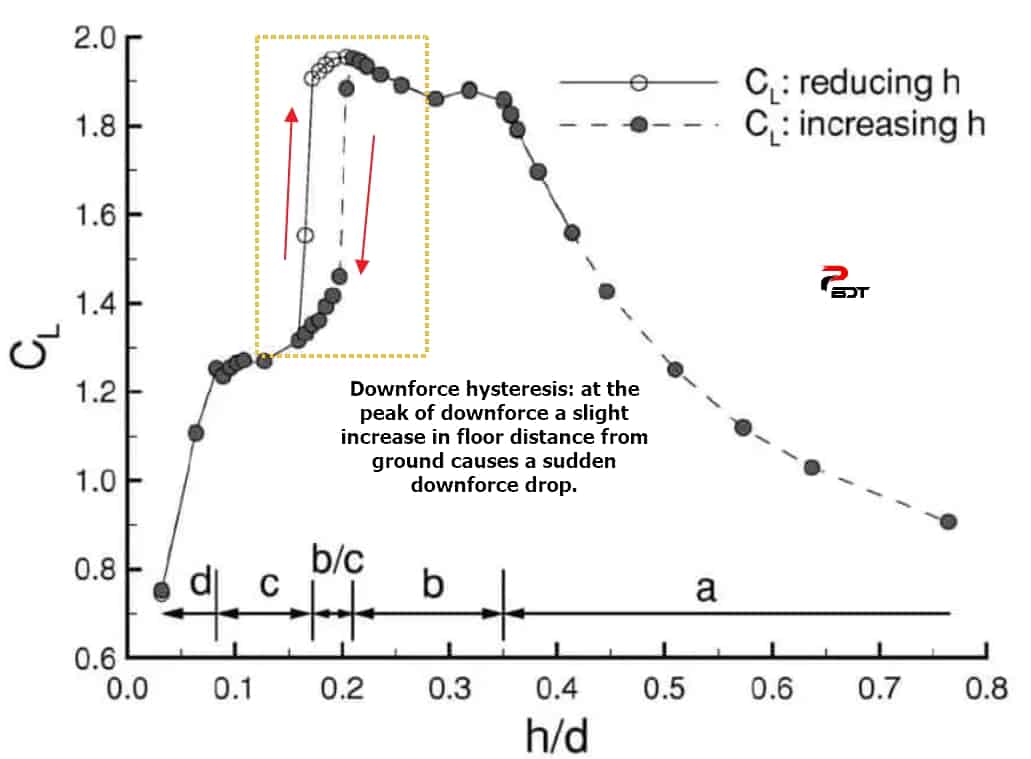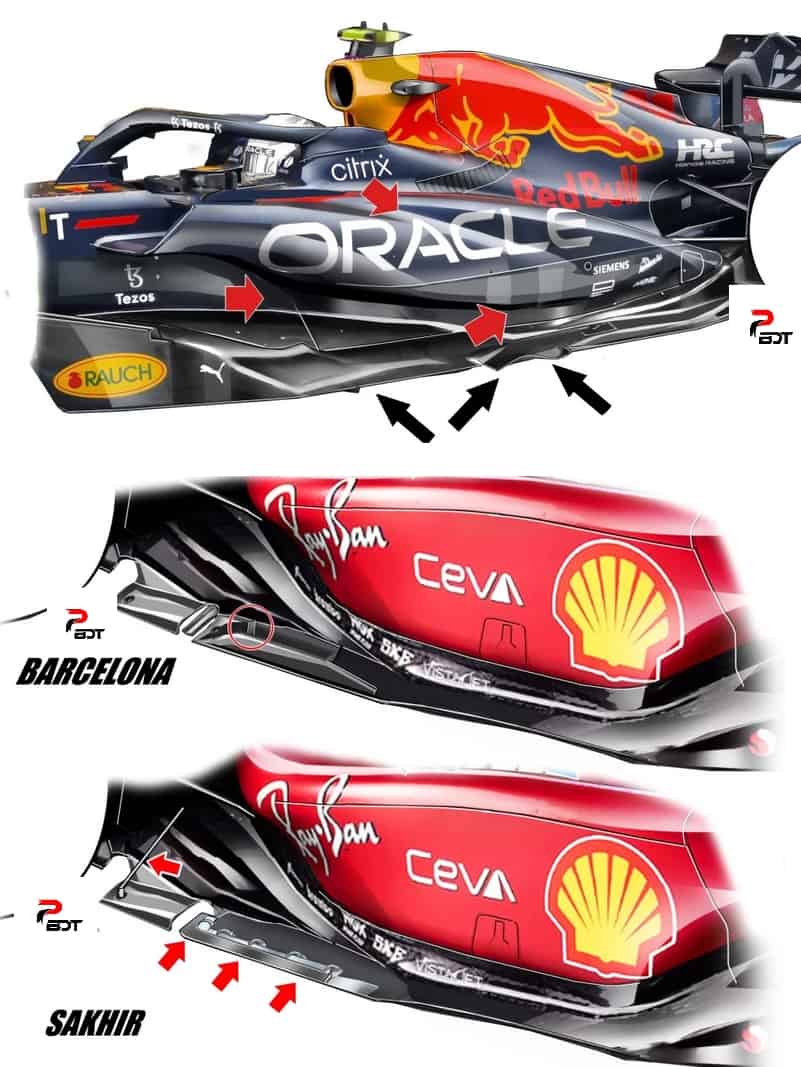What is Porpoising F1 Explained
How F1 porposing works and how to fix it
From where does the porpoise term come from?
The term porpoise is not new in the aerospace industry. In fact, it is usually referred to the ‘boucing off’ that an aircraft undergoes when the pilot push hard to land the airplane. The plane’s repeating bounce will continue a cycle over the runway until the pilot nose dive and crash land the airplane.
Why do we use the porpoise term is F1?
Porpoising aircraft is a situation that follows if the pilot fails to control an airplane bounce correctly. The word ‘porpoising’ is a comebak in F1, has the phenomena was well known in the ground effect cars of 40 year ago. For more detail about how F1 2022 ground effect works, read our related article HERE.
What is porpoising in F1?
In F1, purpoising is a violent bouncing on the suspension at high speeds is what the driver feels. The cause is an aerodynamic one, where either the leading edge of the floor, or perhaps the front wing, is pushed ever closer to the ground as the downforce acting upon it increases. The closer to the ground it gets, the more powerful the ground effect is, as the air rushes ever-faster through the shrinking gap.
How does F1 porposing work?
There are three main phases which may repeat in cycles if the system is not damped. The first phase which precedes porpoising, is when the aero-load is generated by the bottom (underbody) and by the wings in particular the front one. At this point, when the front wing comes too close to the ground for the maximum stall speed, it loses the generated load. Therefore, the front end of the car loses aero-load. Sequentially, the car begins to lift the front end, regaining the functionality of the front wing and at the underbody inlet, but losing the load in the center of the venturi channels.
Why has the purpoise effect comeback to F1?
With much more underbody downforce, stiffer suspensions and stiffer tyres (so not as much cushioning effect) the problem of porpoising has returned with F1 2022 cars. None of the teams had seen this effect in simulation. In a wind tunnel, even the stiffest belt of the rolling road is more flexible than the track surface, and accurately modelling the dynamics of the springs and dampers in this situation is not really possible. In fact, the dynamics reported above, is not new in cars dynamics but this year is massively emphasized by the underbody Venturi channels characterization.
A more detailed explanation of F1 porpoising.
When a F1 car goes on track, the downforce tends to lower the car height even more. Initially this phenomenon is favorable, the downforce generated by the bottom increases, but as soon as the critical height of the stall is reached, the problems begin. As soon as the downforce produced collapses, the car raises from ground. When you increase the ride height, however, the bottom is no longer stalled and the downward aerodynamic force increases, making the car lower again. This creates an oscillating movement of the car along the transverse axis. A hysteresis cycle is obtained on the dowforce value, the machine starts to oscillate and porpoising is born.
Teams tend to find the peak of downforce.
As you may deduce from the graph below, the F1 teams tends to setup the car ride height where the peak of downforce is produced. However, as higlighted by the red box, a slight deviation from that position (which is function of geometrical characteristics like the ridhe height h, the speed v of the flow (and viscosity) and the general shape of the floor) causes a great change in downforce (Cl=lift coefficient, for more about aerodynamics coefficients, read our related article The most important aerodynamic coefficients for racing)
How to fix the porpoising F1.
Which are the main countermeasures tha teams are starting to thinking about to reduce the porpoising (also referred as dolphin motion)? Of course, there are many things on which teams can work on.
- Ride height setup: by increasing the ride height, the ground effect is diminished and the porpoising effect is weaker. The problem with this approach is that also the overall downforce is decreased. Teams like Williams and Aston Martin refer up to +0.700 sec to be attributed to the porposing effect.
- Suspension setup: another way to control the damping of porpoising is to modify the suspension and their stiffnesses. As the previous method, this solution cannot be very effective without compromising performance (in F1 you don’t have active suspension).
- Underfloor – sidepods setup: this solution is the most effective one. Many teams, like Ferrari and Red Bull, made few modification on the floor of their car.
The aerodynamic solution to F1 porpoising.
At higher speeds, the air flowing underneath the car can stall. This can be referred also as “chocked” condition for the underbody floor, caused by simply not being enough space for the air to flow cleanly through the space between the ground and the floor of the car. If this happens, the floor stops generating downforce and the car springs back up to its normal ride height. It immediately starts accumulating air again and is pushed back down, only for the cycle to repeat.
The solutions of Ferrari and Red Bull for porpoising.
On Red Bull floor there are two notches (black arrows) that are perpendicular to the side edge of the floor. In between, an S-shaped part of the floor is used to extract the excess mass flow from the bottom of the car. This reduces the pressure difference under the car, thus reducing the porpoise.
On the second day in Bahrain, the F1-75 featured a revised floor, featuring a long, knife-shaped profile on the side. The philosophy behind the aero update is similar: creating a way out for the underbody air in order to prevent the ‘choking’ condition. Moreover, to get a stiffer floor, a metal thread was allowed by the FIA to be introduced.
That knife-shaped profile is reinforced with some metal clips that are often seen on the front wings as well, jumping from element to element. These clips are needed to counteract deformation at high speed, as this can weaken the effect.




